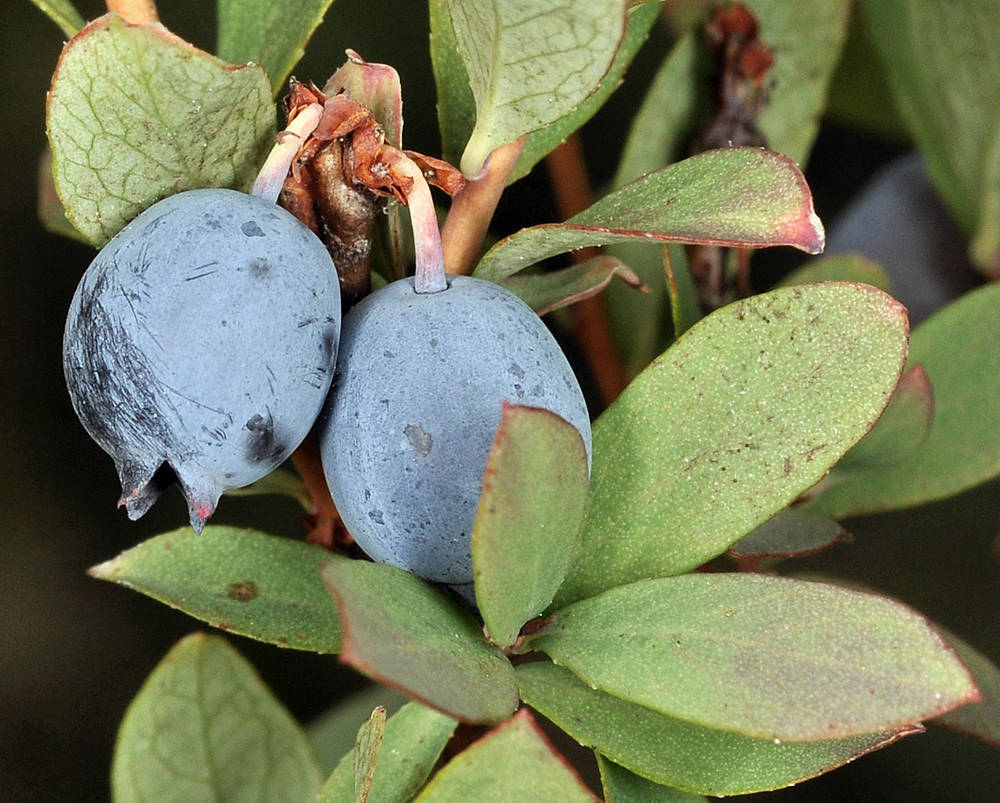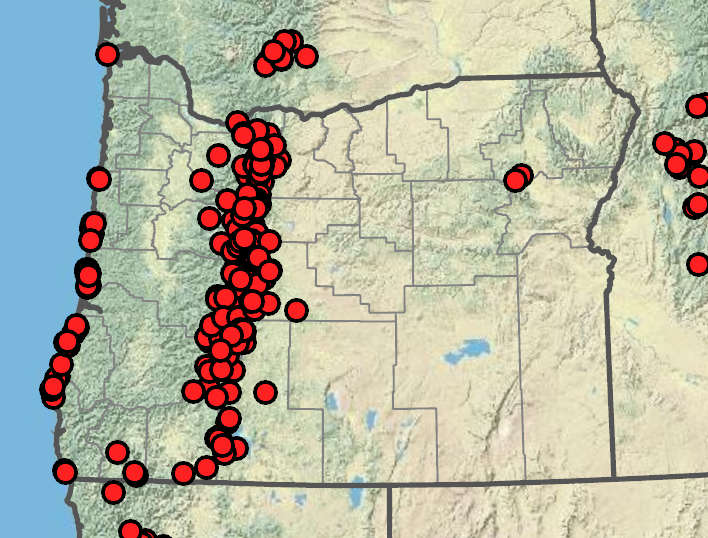Vaccinium uliginosum
Vaccinium oxycoccos
bog bilberry, bog blueberry
bog cranberry, small cranberry, swamp cranberry, wild cranberry
ovate to elliptic, 9–29 × 4–18 mm; thin or thick at maturity;
margins entire;
tips rounded to acute;
surfaces abaxially glabrous or glaucous, adaxially glabrous.
ovate to elliptic, 3–10 × 1–5 mm, strongly glaucous abaxially, green to dark green adaxially; stiff;
margins entire;
tips rounded to subacute;
surfaces abaxially glaucous, adaxially glabrous.
racemes, 2–4-flowered, occasionally 1-flowered.
solitary flowers in axils;
bracts < 1 mm wide.
distinct;
sepals 4 or 5, usually glaucous;
corollas urceolate, 4–6 × 2–5 mm, white to pink, glaucous;
petals 4 or 5;
filaments ? anthers, glabrous.
sepals 4;
calyx lobes shallow, deltate, red, glaucous;
petals 4;
corollas 4.5–7.5 mm; whitish pink to pink, glabrous;
lobes deeply parted and reflexed;
filaments 50% as long as anthers, pubescent.
4–9 mm in diameter, blue to bluish black, with a faint bloom.
4–10 mm in diameter, dark red to bluish black, with a bloom.
evergreen, 1–5 dm;
twigs slender; round in cross section to angled, red to brown, puberulent or sometimes glabrous, often peeling, not rhizomatous.
=24, 48, 72.
=24, 48, 72.
Vaccinium uliginosum
Vaccinium oxycoccos
Wet mid-elevation montane and coastal habitats. Flowering May–Sep. 0–2400 m. BW, Casc, ECas, Est, Sisk. CA, ID, NV, WA; northern US and Canada; Asia, Europe. Native.
Some authorities consider the coastal form of V. uliginosum a distinct species (V. occidentale). If recognized, this species would be identified by its distinctly reticulated leaf veins, thin leaves, and smaller fruits.
Wet mid- to higher elevation bogs and wetlands, often in sphagnum, occasionally coastal. Flowering Apr–Jul. 0–1400 m. Casc, Est. CA, ID, WA; north to AK, east across Canada to northeastern states; circumboreal. Native.
The vine-like habit and tiny reflexed flowers of V. oxycoccos readily distinguish it from all other Oregon Vaccinium species, with the exception of escaped populations of cultivated cranberry (V. macrocarpon). The latter, however, has larger leaves, flowers, and fruits as well as lighter-colored leaves.
Stephen Meyers
Stephen Meyers
- Local floras:
BC,
OR,
WA
- Local Web sites:
Flora NW,
PNW Herbaria
WildflowerSearch
iNaturalist (observations)
USDA Plants Database
- LBJ Wildflower Center
- SEINet
- Plants of the World Online
- Encyclopedia of Life
- Wikipedia
- Google Image Search





